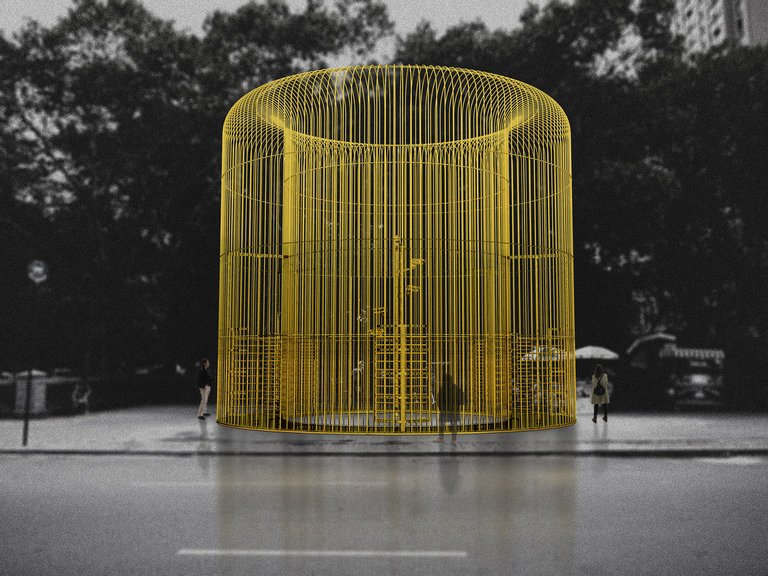Ai Weiwei’s “Good Fences Make Good Neighbors”
Photo from the NYTimes
Chinese artist Ai Weiwei, in collaboration with Public Art Forum, has created a series of 300 works around New York City titled “Good Fences Make Good Neighbors.” Spanning over all five boroughs, Weiwei’s multi-media exhibition chooses public spaces, monuments, bus stops, and advertising boards as its canvas. Each work carries the motif of fences to shed light on the present immigration crisis.
Fences have taken on a political connotation under the Trump presidency. Physically, the fence is an object that cannot be passed but can be seen through. It’s these ideas that inspired Weiwei to bring “Good Fences Make Good Neighbors” to life.
The issue of immigration comes from a personal place for Ai Weiwei; he himself is a political refugee. He experienced exile growing up in China and as an immigrant student in New York. In 2011, he was abducted and tortured by his home country after vocalizing his oppositions to their human rights reforms.
By placing an exhibition about the humanity of forgotten and mistreated migrants/refugees in one of the world’s most privileged cities, he creates a tension that is meant to make the viewer feel uncomfortable. This loud statement is pushed even further by the three main works in this collection, "Arch, Circular Fence, and Gilded Cage."
The issue of immigration comes from a personal place for Ai Weiwei; he himself is a political refugee.
Tucked underneath the iconic arch honoring America’s first president, George Washington, at the helm of Washington Square Park, sits "Arch," a giant silver cage bearing the shapes of two huddled figures cut out from the center. It is through this aluminum lined joint silhouette one must walk through if they wish to walk under the arch. Across the river in Queens, his Circular Fence encloses the borough's famous monument to a globalist future, the Unisphere. While back in Manhattan, Gilded Cage stands in the shadow of the Trump Tower uptown. His work is having a conversation with history--one that is too dangerous to dismiss.
Ai Weiwei has repurposed the city as a tool of political change. He’s weaving the 21st century narrative of activism into the fabric of the old, creating a tapestry of social responsibility. His works cannot be ignored, just like those his work represents.
Hannah Gulledge's initial recommendation for this exhibition can be found in Issue 7 of the EST Magazine

